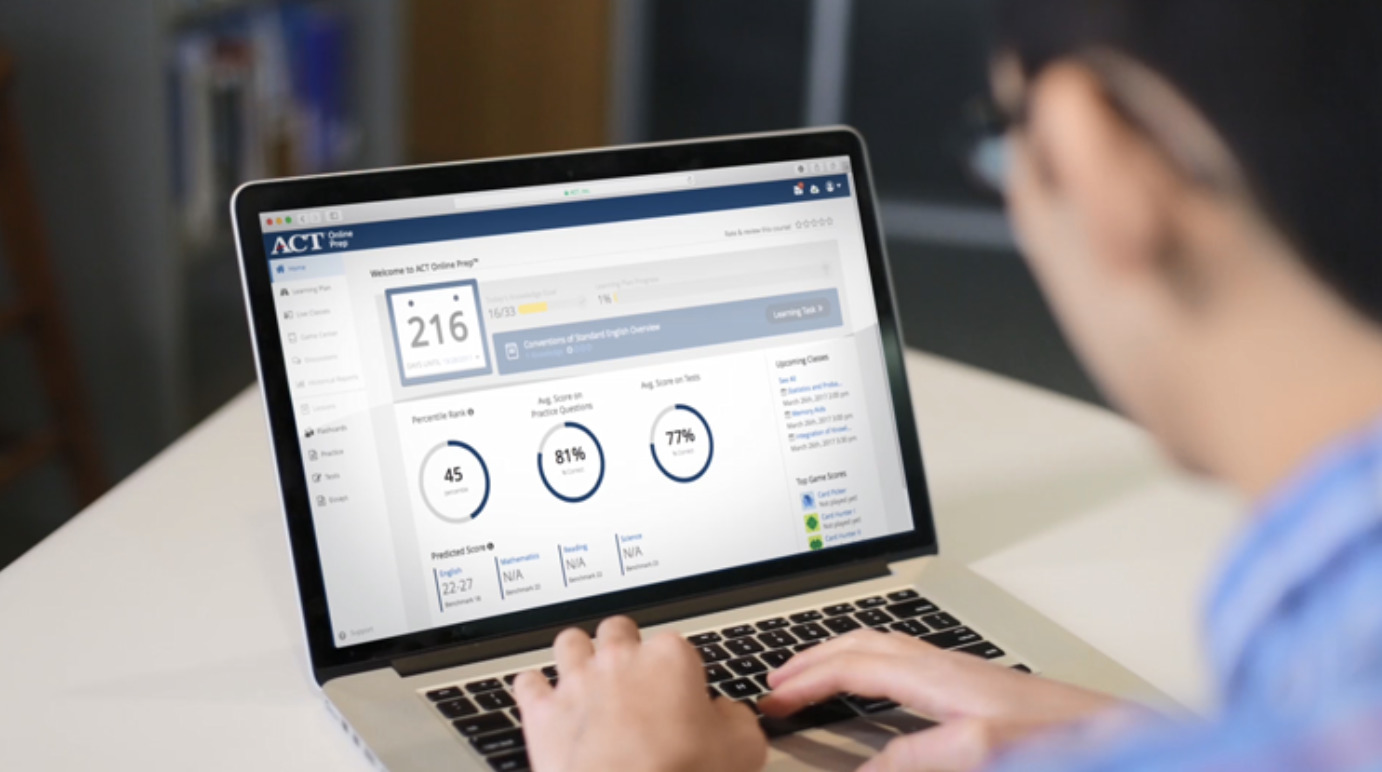Over the past few years, the ACT has begun rolling out a computer-based version of the ACT. This exists in stark contrast to the paper-and-pencil version that’s been available for decades. Students taking a computer-based version will still see the same content and format of a traditional ACT, just on a computer. The test is not provided online, so students would have to take the exam on a test site specific computer at an official ACT test center. In a pre-COVID world, the ACT planned to begin offering a computer-based option in the United States in September of 2020. Technically, the ACT’s digital exam has existed for several years before 2020, but only for international test-takers outside of the United States. With the changing of the testing landscape in 2020, those plans were never realized, but many high schools have offered a School Day ACT for juniors in the spring in a computer-based format. These “school day ACT” tests are provided by the school, but still function as an official ACT that students use for their college application. Whether your student is attending a high school with a computerized school day ACT or they encounter a future national ACT with a computerized option, it may be important to understand the differences between a paper ACT vs. a computer ACT.
The computer-based test or “Digital ACT” is provided on a software system specific to the ACT organization, so many students will not be familiar with the tools, navigation, and answering options on their digital test. Here is a breakdown of similarities and differences between the two versions of the ACT:
| Similarities | Differences |
| Test structure, format, and breaks | The digital test is scored and returned more quickly for the digital test |
| Order of test sections: English, Math, Reading, Science | When taking the Writing test, students must type their essay on the digital test |
| Time per section – English (45 minutes), Mathematics (60 minutes), Reading (35 minutes), Science (35 minutes) | The digital test offers tools, such as a highlighter, magnifier, answer eliminator, answer masker, and question flagger |
| Difficulty level | The paper test has students bubble in their answer, whereas the digital test only requires students to click on their preferred answer |
| Scoring scale (1-36) – the composite is an average of the English, Mathematics, Reading, and Science sections’ 1-36 scores | On a digital test, students receive access to a “countdown” timer that lets them see exactly how much time they have remaining in the test section |
| Students can go back within a section to review previous questions and answers earlier in the section (Note: students can never go back to a previous test section once time has been called on that section) | Students receive scrap paper to utilize while taking the computer-based version of the test |
| Students can bring and use their own calculator for the Math section | Students cannot draw or circle within a test passage on the digital test, but students can make any mark they’d like on a paper test |
| Students with testing challenges can receive their individualized accommodations on both a paper and digital test |
Digital tests aren’t necessarily new: the GRE and GMAT tests have been offered on a computer for many years at this point. For students preparing for an ACT computer-based test, though, this experience may feel new, so we encourage students to seek out digital practice opportunities. One computer-based practice test is available on the ACT’s website as a tool for international test-takers, although students from any country are allowed to use it for preparation. That test can be found under ACT International Computer-Based Testing Information on the ACT’s website. Students should experience the differences of a computer-based test before taking an official ACT digitally. The Reading and Science sections can be challenging for students accustomed to paper-and-pencil tests because of the reading element. Having to scroll down on the screen while reading a Reading or Science passage can change students’ ability to mentally record what the passage is saying. Students using specific testing strategies, like reading the questions before reading a passage, may find these strategies ineffective for a computer-based test where you can only see one question at a time. Getting accustomed to the ACT’s computer software will help students navigate these challenges before taking the official test. If you purchase an official ACT prep guide (made by the ACT organization), you receive access to an additional 5 full online practice tests that can be used to simulate a digital ACT. We recommend engaging with practice in the same modality that you are going to test in–especially for the computer-based version.
Other than international test-takers, most students may not encounter a computer-based ACT unless your high school has chosen the digital option for a School Day ACT (provided and paid for by the school)–often provided to students during February or March of their junior year. For the time being, students in the U.S. will not receive the option to register for a computer-based ACT on a national test date. If the ACT decides to follow through with their plan to provide single-section re-testing in the future, we may see computer-based testing as an option for national tests. For any questions about your student’s upcoming test schedule, please contact us at [email protected].


